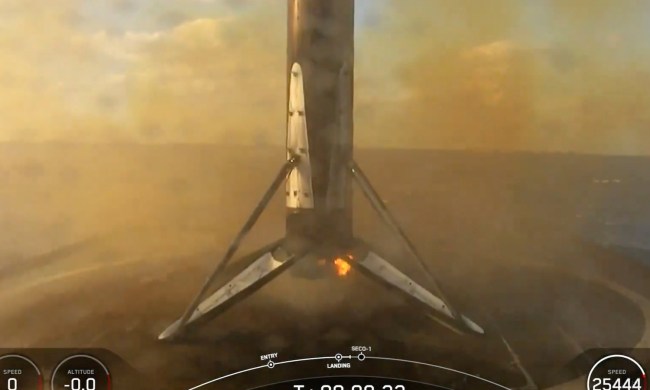Rocket Lab is a rapidly expanding commercial spaceflight company that’s keen to emulate the roaring success of SpaceX.
Like its rival, Rocket Lab is intent on building a reusable rocket system to help it cut the cost of its space missions that up to now have delivered satellites into orbit for a range of private companies.
But the two companies differ markedly in their approach to rocket recovery. While SpaceX has already nailed the landing process for its first-stage Falcon 9 booster, Rocket Lab has been fishing its own boosters out of the ocean. But now it’s gearing up for its first-ever attempt at grabbing a falling Electron booster from the sky using a helicopter.
Rocket Lab will attempt the feat during a commercial rideshare mission that’s currently scheduled for no earlier than April 19, with a customized Sikorsky S-92 helicopter attempting to catch the Electron’s 40-foot-tall first stage just a few minutes after launch from its facility in New Zealand.
The capture attempt will take place about 150 miles off the coast of New Zealand. The booster will use parachutes to slow its descent. This will enable the helicopter to make a close approach before deploying a specially designed grappling hook to snag the parachute’s drogue line and capture the booster. The helicopter will then transport the captured component to land, after which Rocket Lab will assess its suitability for use in another mission.
Two years ago the company succeeded in using a helicopter to pluck a dummy booster from the sky in a practice mission.

Commenting on the upcoming mission, Rocket Lab founder and CEO Peter Beck said: “We’ve conducted many successful helicopter captures with replica stages, carried out extensive parachute tests, and successfully recovered Electron’s first stage from the ocean during our 16th, 20th, and 22nd missions. Now it’s time to put it all together for the first time and pluck Electron from the skies.”
Beck added: “Trying to catch a rocket as it falls back to Earth is no easy feat, we’re absolutely threading the needle here … We expect to learn a tremendous amount from the mission as we work toward the ultimate goal of making Electron the first reusable orbital small sat launcher and providing our customers with even more launch availability.”
Rocket Lab is also developing a more powerful two-stage rocket called Neutron that’s capable not only of satellite deployment but also of interplanetary missions and even crewed spaceflight.
The new rocket is set to take its first orbital flight in 2024. However, in this case, Rocket Lab plans to land the first-stage booster in the same way as SpaceX does with the Falcon 9, rather than grab it from the sky using a helicopter.


